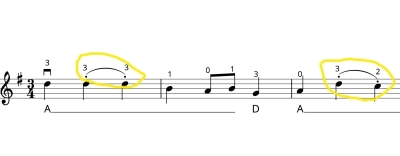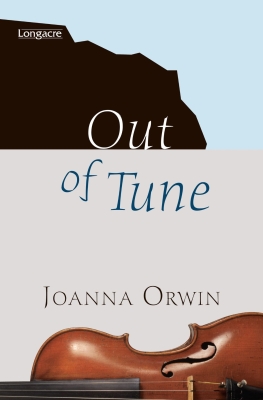Welcome to our forum. A Message To Our New and Prospective Members . Check out our Forum Rules. Lets keep this forum an enjoyable place to visit.
Currently working on errors from the latest (SimplePress) forum update. Many issues have been resoled and others are being worked on. Thank you for your patience.
 Topic RSS
Topic RSS



 (4 votes)
(4 votes) Regulars
 Offline
Offline







Regulars
 Offline
Offline






Regulars
 Offline
Offline



I think that more emphasis needs to be placed on finger positions in the early stages of learning. Being a NooB at this gives me recent experience in having to spend more hours in getting my intonation right because I didn't spend enough time in the early days on it.
I understand that there's a conflict between creating enough enthusiasm so the student will feel they're progressing (and keep coming back) and good fingering technique for good intonation. However, there's got to be a balance with (I feel) a stronger emphasis on getting and keeping good intonation over learning a new musical piece which will create a false sense of achievement and lead to bigger problems down the road. So many of the progress videos I've watched have intonation begin to happen after about the 4th month of practice. That leads me to believe that most instruction follows the same basic teaching program which fails to emphasize intonation and proper finger position technique early on.
There has to be a better way.
Regulars
 Offline
Offline








@RDP said:
I think that more emphasis needs to be placed on finger positions in the early stages of learning. Being a NooB at this gives me recent experience in having to spend more hours in getting my intonation right because I didn't spend enough time in the early days on it.
Intonation is NOT something you just learn once & you're done!
Even if you had spent more time on finger positions earlier, as time passes your ears get better and you will notice more & more deviations.
Right now, you are trusting in a not so accurate tuner to tell you if you are hearing/playing the right pitch.
It takes T I M E... to train your ears, your body & your brain to work together - especially your ears.
Another year from now, and another after that, you'll look back and know this to be true - there's no shortcut.
IMHO you will work on intonation for as long as you play an instrument.
If you plan to stick with this, set high goals, but have realistic expectations. If you can afford the best equipment - ask Fiddlershop for help and BUY IT. With questionable equipment out of the way your end of this musician/instrument partnership will be crystal clear.
It certainly doesn't hurt to keep trying to play new, different pieces - on the contrary, the more combinations of notes you learn - ultimately you are learning pitch interval relationships on your violin!
Scales are important, but there are more intervals to learn than just half steps & whole steps. This is where you choose to play other exercises & etudes or choose pieces of music you enjoy. If you want faster progress, work with a teacher who teaches adults.
Again, IMHO bowing, listening to your bowing, should be your first concern... along with having fun learning music you love.
If you are still having tremor problems with your bowing hand/arm - consider relearning with a violin meant for your right hand and learn to bow with your left hand/arm. Not only could this solve some bowing issues - your tremors may end up only manifesting as a form of vibrato, which would be an additional bonus.
There are specific violins made for right arm playing, but you may find it less confusing to just use your current violin - just don't change the order of the strings, it won't work right.
AND... I wouldn't trust other people's progress videos on YouTube.
Regulars
 Offline
Offline








@doc-ivory said:
Boy, there are some days I can hit the right spots for intonation, even with my little finger.
Most days, today being one, I can't hit a dang thing.
All it takes is a lifetime.......
ONWARD!!!
I certainly have those days!
...might help if I tuned my fiddle every day. 😳
💖 your attitude!
← Just found this book I think is GREAT for young adult readers, that I think my oldest Granddaughter will enjoy.
- Emily
RDP said
Mouse said
@Fiddlerman I think my perception needs glasses and a hearing aid!
🐭
Seeing eye dog wanted...
BAHAHAHAHAHA!!!
Ain't that the truth Mouse!!!
You know the dot above a note signifying a detached slur? There are times I'm SQUINTING to make sure I'm seeing what I'm seeing. LOL!!
-Jim










Detached slur/hooked bowing. Dotted notes for rhythm are an entirely different thing.
A slur is two or more notes in one bow stroke. With a slur alone, there is no articulation from the bow. The left hand is changing the notes during the single bow movement.
A dot indicates an articulated movement from the right hand in the bow movement.
I think composers take some artistic license when annotating specific articulations (& editors, too). Some will include explanations (most don’t). I’ve attached an example of a student concerto I’m working on that provides some bowing explanations and articulations.
The “rules” are not “laws”. The articulation police are not going to show up at your door because you decided to hook (i.e., slur) two 8th notes that do not have a slur annotation at an end of a phrase so that you can start on a down bow in the next phrase. That’s why orchestras have Concert Masters (one of the reasons) – among other things, they decide on the bowing, fingering, etc., so that everyone is together.
Characterize people by their actions and you will never be fooled by their words.
Regulars
 Offline
Offline








Hope you all don't mind, thought this could lead to MUCH more about bowing (instead of intonation), so hope you'll join me to continue this more here:
ELCBK said
@doc-ivory said:
You know the dot above a note signifying a detached slur?
Please tell me more about this - it's new to me!
I only know of Staccato, notated with a dot above the note - and Fermata, notated with a dot & eyebrow above it. Neither one sound anything like what you describe.
This is one of the simpler from my lessons.
They explained to me that it's a slur but the dot above tells me to stop the bow at the end of beat for the note, then continue on with the bow in the same direction, stopping again. There are days when I'm squinting to see it.


1 Guest(s)


 Log In
Log In Register
Register



















